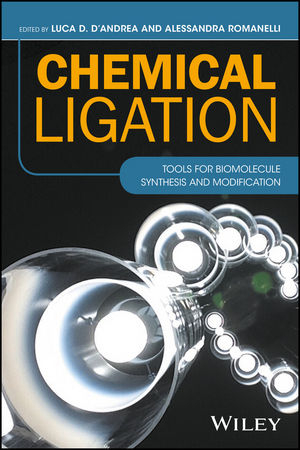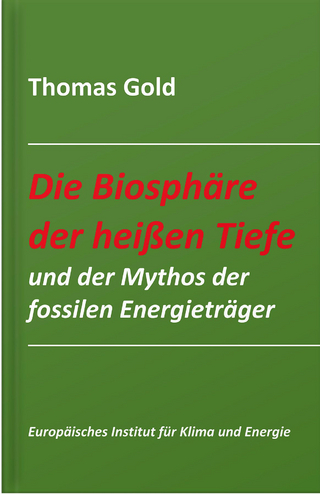
Chemical Ligation
John Wiley & Sons Inc (Verlag)
978-1-119-04410-9 (ISBN)
Presenting a wide array of information on chemical ligation – one of the more powerful tools for protein and peptide synthesis – this book helps readers understand key methodologies and applications that protein therapeutic synthesis, drug discovery, and molecular imaging.
• Moves from fundamental to applied aspects, so that novice readers can follow the entire book and apply these reactions in the lab
• Presents a wide array of information on chemical ligation reactions, otherwise scattered across the literature, into one source
• Features comprehensive and multidisciplinary coverage that goes from basics to advanced topics
• Helps researchers choose the right chemical ligation technique for their needs
Luca D. D'Andrea, PhD, is Research Scientist at the Institute of Biostructures and Bioimaging, CNR Naples, Italy. His scientific interests are in the field of peptide and protein chemistry. His research activity focuses on design, synthesis, and structural characterization of peptide/proteins as therapeutic/diagnostic agents. Alessandra Romanelli, PhD, is assistant professor of General Chemistry at Department of Pharmacy, University of Naples "Federico II", Italy. She actively works in the field of peptides and peptide-based molecules (such as peptide nucleic acids) as tools for chemical biology.
List of Figures xiii
List of Plates xxiii
List of Contributors xxix
Preface xxxiii
1 Introduction to Chemical Ligation Reactions 1
Lucia De Rosa, Alessandra Romanelli, and Luca Domenico D’Andrea
1.1 Introduction 1
1.2 Chemical Ligation Chemistries 6
1.3 Imine Ligations 7
1.4 Serine/Threonine Ligation (STL) 21
1.5 Thioether Ligation 24
1.6 Thioester Ligation 25
1.7 α–Ketoacid–Hydroxylamine (KAHA) Ligation 49
1.8 Staudinger Ligation 52
1.9 Azide–Alkyne Cycloaddition 57
1.10 Diels–Alder Ligation 61
References 64
2 Protein Chemical Synthesis by SEA Ligation 89
Oleg Melnyk, Claire Simonneau, and Jérôme Vicogne
2.1 Introduction 89
2.2 Essential Chemical Properties of SEA Group 93
2.3 Protein Total Synthesis Using SEA Chemistry – SEAon/off Concept 97
2.4 Chemical Synthesis of HGF/SF Subdomains for Deciphering the Functioning of HGF/SF-MET System 106
2.5 Conclusion 114
References 114
3 Development of Serine/Threonine Ligation and Its Applications 125
Tianlu Li and Xuechen Li
3.1 Introduction 125
3.2 Serine/Threonine Ligation (STL) 130
3.3 Application of STL in Protein Synthesis 140
3.4 Conclusion and Outlook 154
References 154
4 Synthesis of Proteins by Native Chemical Ligation–Desulfurization Strategies 161
Bhavesh Premdjee and Richard J. Payne
4.1 Introduction 161
4.2 Ligation–Desulfurization and Early Applications 162
4.3 Beyond Native Chemical Ligation at Cysteine – The Development of Thiolated Amino Acids and Their Application in Protein Synthesis 174
4.4 Ligation–Deselenization in the Chemical Synthesis of Proteins 211
4.5 Conclusions and Future Directions 216
References 218
5 Synthesis of Chemokines by Chemical Ligation 223
Nydia Panitz and Annette G. Beck–Sickinger
5.1 Introduction – The Chemokine–Chemokine Receptor Multifunctional System 223
5.2 Synthesis of Chemokines by Native Chemical Ligation 224
5.3 Synthesis of Chemokines by Alternative Chemical Ligation 231
5.4 Semisynthesis of Chemokines by Expressed Protein Ligation 233
5.5 Prospects 241
References 243
6 Chemical Synthesis of Glycoproteins by the Thioester Method 251
Hironobu Hojo
6.1 Introduction 251
6.2 Ligation Methods and Strategy of Glycoprotein Synthesis 252
6.3 The Synthesis of the Extracellular Ig Domain of Emmprin 254
6.4 Synthesis of Basal Structure of MUC2 256
6.5 N–Alkylcysteine–Assisted Thioesterification Method and Dendrimer Synthesis 257
6.6 Synthesis of TIM–3 260
6.7 Resynthesis of Emmprin Ig Domain 262
6.8 Conclusion 264
References 264
7 Membrane Proteins: Chemical Synthesis and Ligation 269
Marc Dittman and Martin Engelhard
7.1 Introduction 269
7.2 Methods for the Synthesis and Purification of Membrane Proteins 270
7.3 Ligation and Refolding 273
7.4 Illustrative Examples 276
References 280
8 Chemoselective Modification of Proteins 285
Xi Chen, Stephanie Voss, and Yao-Wen Wu
8.1 Chemical Protein Synthesis 285
8.2 Chemoselective and Bioorthogonal Reactions 287
8.3 Site-Selective Protein Modification Approaches 307
References 322
9 Stable, Versatile Conjugation Chemistries for Modifying Aldehyde-Containing Biomolecules 339
Aaron E. Albers, Penelope M. Drake and David Rabuka
9.1 Introduction 339
9.2 Aldehyde as a Bioorthogonal Chemical Handle for Conjugation 339
9.3 Aldehyde Conjugation Chemistries 340
9.4 The Pictet–Spengler Ligation 341
9.5 The Hydrazinyl-Iso-Pictet–Spengler (HIPS) Ligation 341
9.6 The Trapped-Knoevenagel (thioPz) Ligation 343
9.7 Applications – Antibody–Drug Conjugates 346
9.8 Next-Generation HIPS Chemistry – AzaHIPS 348
9.9 Applications – Protein Engineering 349
9.10 Applications – Protein Labeling 349
9.11 Conclusions 351
References 351
10 Thioamide Labeling of Proteins through a Combination of Semisynthetic Methods 355
Christopher R. Walters, John J. Ferrie, and E. James Petersson
10.1 Introduction 355
10.2 Thioamide Synthesis 356
10.3 Thioamide Incorporation into Peptides 357
10.4 Synthesis of Full–Sized Proteins Containing Thioamides 360
10.5 Applications 368
10.6 Conclusions 381
Acknowledgments 381
References 382
11 Macrocyclic Organo-Peptide Hybrids by Intein-Mediated Ligation: Synthesis and Applications 391
John R. Frost and Rudi Fasan
11.1 Introduction 391
11.2 Macrocyclic Organo-Peptide Hybrids as Natural-Product-Inspired Macrocycles 396
11.3 Application of MOrPHs for Targeting α-Helix-Mediated Protein–Protein Interactions 406
11.4 Conclusions 410
References 410
12 Protein Ligation by HINT Domains 421
Hideo Iwaï and A. Sesilja Aranko
12.1 Introduction 421
12.2 Protein Ligation by Protein Splicing 423
12.3 Naturally Occurring and Artificially Split Inteins for Protein Ligation 424
12.4 Conditional Protein Splicing 427
12.5 Inter- and Intramolecular Protein Splicing 429
12.6 Protein Ligation by Other HINT Domains 430
12.7 Bottleneck of Protein Ligation by PTS 432
12.8 Comparison with Other Enzymatic Ligation Methods 432
12.9 Perspective of Protein Ligation by HINT Domains 437
12.10 Conclusions and Future Perspectives 438
Acknowledgment 438
References 438
13 Chemical Ligation for Molecular Imaging 447
Aurélien Godinat, Hacer Karatas, Ghyslain Budin, and Elena A. Dubikovskaya
13.1 Introduction 447
13.2 Chemical Ligation 448
13.3 Conclusion 470
References 473
14 Native Chemical Ligation in Structural Biology 485
Lucia De Rosa, Alessandra Romanelli, and Luca Domenico D’Andrea
14.1 Introduction 485
14.2 Protein (Semi)synthesis for Molecular Structure Determination 486
14.3 Protein (Semi)Synthesis for Understanding Protein Folding, Stability, and Interactions 494
14.4 Protein (Semi)Synthesis in Enzyme Chemistry 501 References 506
Index 517
| Erscheinungsdatum | 04.05.2017 |
|---|---|
| Verlagsort | New York |
| Sprache | englisch |
| Maße | 160 x 239 mm |
| Gewicht | 1021 g |
| Themenwelt | Naturwissenschaften ► Biologie ► Biochemie |
| Naturwissenschaften ► Chemie ► Organische Chemie | |
| ISBN-10 | 1-119-04410-3 / 1119044103 |
| ISBN-13 | 978-1-119-04410-9 / 9781119044109 |
| Zustand | Neuware |
| Informationen gemäß Produktsicherheitsverordnung (GPSR) | |
| Haben Sie eine Frage zum Produkt? |
aus dem Bereich


